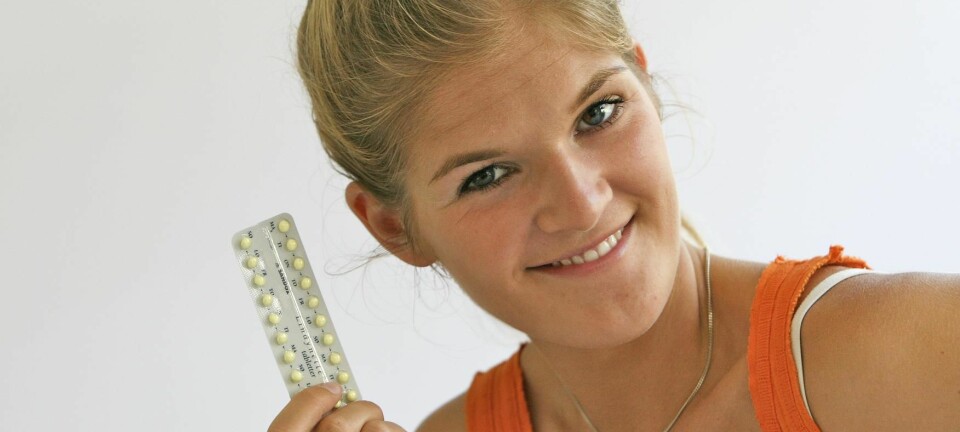
Norway and Iceland use hormonal contraceptives the least
A new survey reveals differences in contraceptive preferences among women in Nordic countries.
Amongst the Nordic countries, Denmark leads the pack in use of medically prescribed contraceptives, followed by Sweden and Finland.
Trailing behind them are Iceland and Norway, according to research based on the sales statistics and information about prescribed and purchased contraceptives.
Researchers charted prescriptions of hormonal contraceptives in the Nordic countries from 2010 to 2013 – prescribed to a total of 5.8 million women. They also used information on the number of copper-based intrauterine devices (IUDs) in the same period.
Combining these figures, they assessed that 42 percent of Danish women used these contraceptives that are obtainable only by prescription in 2013. Some 41 percent of Swedish women and 40 percent of Finnish women used either copper IUDS or hormonal contraceptives.
Only 33 percent of Norwegian women used these and even a smaller share of Icelandic women, 31 percent.
What explains these different tallies amongst women in the Nordic countries?
Hormonal IUDs in, copper-based out
“Norway has traditionally had a lower use of hormonal contraceptives than our Nordic neighbours,” says a professor in social medicine, Finn Egil Skjeldestad at the University of Tromsø – the Arctic University of Norway. He participated in the research collaboration.
It should be added that the number of hormonal IUDs used by women in Norway might be twice the quantity picked up by the study, according to Skjeldestad, but they still use proportionally fewer hormonal contraceptives than women in Sweden, Denmark and Finland.
Amongst Nordic women it was found that Norwegian women in particular in the older age group of fertility were less prone to using hormonal contraceptives.
“In the younger age groups there is no difference,” says Skjeldestad.
The researchers find that only a small share of women use a copper-based IUD. Skjeldestad says this device is on its way out.
Less known about non-hormonal contraceptives
Of course there are many ways of avoiding pregnancies. The study has tallied use of hormonal contraception and added on sales figures for condoms.
Other non-hormonal alternatives are available. Women also buy devices that help them track their fertility cycle by measuring temperature changes, retailed under brands such as Pearly and LadyComp. The researchers had no information on the number of women in Nordic countries using these.
However, it is known that the share of persons who sterilise themselves is higher in Norway than in the other Nordic countries.
Norwegians also buy more condoms per capita than do Swedes, Danes, Finns and Icelanders.
Increase in long-acting contraceptives
From 2011 to 2013 a rise was seen in Norwegian women using long-acting contraceptives. Mostly, these were hormonal IUDs and birth control implants.
This was in alignment with advice from the Norwegian Directorate of Health.
“The Norwegian Directorate of Health and general expert opinion agree that more women should be using long-acting contraceptives which do not require daily use,” says the professor.
“Among younger women we see a mounting use of birth control implants, whereas the hormonal coil is still used a little more in all age groups,” says Skjeldestad.
Nina Aurora Malm, a public health nurse in Norway, can confirm this shift in use of contraceptives.
She has worked at the Nydalen Public Health Centre for youth in Oslo since 2009. She has also been a nurse for the Nydalen High School since 2011.
Public health centres for young people are scattered around Oslo, serving adolescents and young adults aged 12 to 24.
In 2009 she observed that most of the girls and young women who came for contraceptives wanted the pill, often the combined oral contraceptive pills containing both oestrogen and gestagen, the latter being an imitation of the female hormone progesterone.
“Contraceptives were synonymous with the combined oral contraceptive pills,” she says.
This is no longer the case.
Most want implants
Malm estimates that she prescribes birth control implants to about half the girls she is in contact with. These are tiny, thin rods that are implanted under the skin of the upper arm and are categorised as long-acting contraceptives.
In the past five years since Malm started working as a nurse for Nydalen High School she has noted that a mounting number of girls prefer these to contraceptive pills.
She has also witnessed a change in recommendations from institutions young women receive guidelines from, such as the health centre “Sex og samfunn”.
The Norwegian Directorate of Health writes the following on its website [our translation]:
“Women should be given more information than they currently get about choices regarding birth control which include the long-acting reversible contraceptive methods as these eliminate user errors and provide more security against pregnancies than most other methods.”
In addition to the hormonal implants, Malm now writes more prescriptions for hormonal coils than she used to. A new type has hit the market – Jaydess – which is smaller in size than previous IUDs. It is not a combination product as it only contains a single hormone.
Noticeable decrease in pregnancies
The main reason for recommending long-acting contraceptives is primarily their efficacy in reducing unwanted pregnancies. Women no longer have to keep track of daily pills which need to be attuned to their menstrual cycles.
“That said, I experience some scepticism regarding implants. Rumours spread. It is said that some users experience problems with bleeding and these voices are the loudest, just as dramatic child-birth stories get heard more than easy births.”
But: “There is less stress. You cannot slip up as a user,” says Malm.
Along with a shift toward long-acting birth control methods, there are fewer unwanted pregnancies at the school where she works.
There is no certain explanation, but Malm figures it is the change in use of contraceptives.
“During my first year here we had 19 unwanted pregnancies. Now we have a max of five.”
“Of course it could be because the young persons at school here have changed, but it might be their more extensive use of long-working contraceptives.
The hormonal IUD comes in many types, is inserted by a doctor and can prevent pregnancies for three to five years, depending on which type is used, according to the website Norsk Helseinformatikk.
The website informs that these should be replaced with new ones every three years.
Warning about blood clots in 2011
Something happened a few years back which enticed Skjeldestad and the other researchers wished to investigate which types of birth control Nordic women use, and whether this has changed in the past three years.
It was found that women ran a higher risk of blood clots when using certain types of combination contraceptive pills, the ones containing both oestrogen and gestagen, when the gestagen (synthetic progesterone) consisted of the types: desogestrel, drospirenone or gestodene.
The European Medicine Agency (EMA) went as far as to issue a warning about these oral contraceptives in 2011.
As of 2013 the EMA recommends women to make a switch from these old oestrogen and gestagen types with combination pills lacking these gestagens.
The findings in the new study of birth-control use shows that Danish women were eager to make the change to the oral contraceptives which were now EMA recommended. From 2010 to 2013 the use of the pills that were in disfavour fell in Denmark from 87 percent of all hormonal contraceptives to 50 percent.
Norwegian women and their physicians also took heed of the warning from the EMA, but these pills had not been in such widespread use as they were in Denmark.
Finnish surprise
Finnish women, on the other hand, didn’t change their contraceptives of preference at all despite the warning of potential blood clot risks. They held their ground even though oral contraception they almost unanimously used was the type of combination pill which the EMA cautioned against.
Skjeldestad considers this the most surprising discovery of the study.
The researchers cannot explain why female Finns and their doctors have continued to use these pills.
“Knowledge about the association between the gestagen component in oral contraceptives and blood clots has been discussed just as much in Finland as in the other countries, but in Finland it has had no impact on the filling out of prescriptions.”
The Danes may have been quick to react because the studies from the Nordic countries showing a link between gestagen and blood clots were carried out in Denmark.
“So it has attracted more attention in Denmark and doctors have changed their prescription practice much faster than in Sweden and Norway,” says Skjeldestad.
He and his Nordic research colleagues are now working on an updated study of birth-control usage from the registers up to the year 2015.
-------------------------------------
Read the Norwegian version of this article at forskning.no
Translated by: Glenn Ostling
































